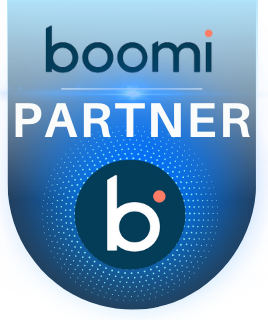Achieving scalable and seamless data integration for a global diagnostic medical solutions provider
- Home
- Achieving scalable and seamless data integration for a global diagnostic medical solutions provider
Achieving scalable and seamless data integration for a global diagnostic medical solutions provider
Introduction
This case study highlights how our client, a leading provider of diagnostic medical imaging solutions, successfully addressed their data integration challenges by leveraging the power of Boomi, a scalable and high-available integration platform. By implementing an event-driven integration architecture, adopting standardized design patterns, and utilizing Boomi’s features, Customer achieved seamless data exchange between cloud and on-premises applications, resulting in significant business benefits.
Customer Spotlight:
Customer is a global company offering a comprehensive range of diagnostic medical imaging solutions, including CT, MR, X-Ray, Ultrasound, and Healthcare Informatics. Their primary goal is to deliver exceptional health opportunities for patients through uncompromised performance, comfort, and safety features.
Challenges and Operational Issues:
Customer faced several challenges and operational issues related to data integration, including:
· Implementing an event-driven integration architecture to facilitate seamless data exchange between cloud and on-premises applications.
· Ensuring scalability by utilizing upgradable application views instead of custom SQL solutions.
· Establishing a standard exception handling framework to minimize the risk of data loss.
Business Goals
Customer recognized the need for a scalable and highly available platform to connect various applications across different environments. They chose Boomi as their integration tool to achieve the following business goals:
· Establish a robust event-driven integration architecture.
· Leverage upgradable application views to ensure scalability.
· Define a standard exception handling framework to prevent data loss.
Solution and Business Benefits
To address these challenges, Customer implemented the following solutions and achieved significant business benefits:
· Designed and developed integrations using standardized design patterns, integration best practices, and generic components.
· Prioritized the use of standard Boomi shapes and functions to ensure scalability, reducing reliance on custom scripting.
· Utilized Boomi as the centralized integration logic and leveraged its flexibility in conjunction with Solace.
· Ensured synchronization of data among different applications to avoid data quality issues.
· Implemented Boomi Molecule as the runtime engine to ensure high availability and zero downtime.
Technology Challenges:
Customer faced several technology challenges during the integration process, including:
· Transitioning from ETL-based design patterns to event-driven design patterns.
· Adopting canonical models for mapping instead of direct mapping.
· Retrieving data from Oracle ERP using event-driven integration architecture.
· Building a flexible integration logic using topics and queues.
Technology Stack
Integration Tool: Boomi
Touch Points: Oracle Fusion, Salesforce, Oracle EBS
By leveraging the capabilities of Boomi, Customer successfully addressed their data integration challenges and achieved their business goals. The adoption of standardized design patterns, event-driven architecture, and the utilization of Boomi’s features resulted in seamless data exchange, improved scalability, and enhanced operational efficiency. With a centralized integration logic and high availability provided by Boomi Molecule, Customer experienced significant business benefits and ensured the delivery of optimum health opportunities for patients worldwide.

